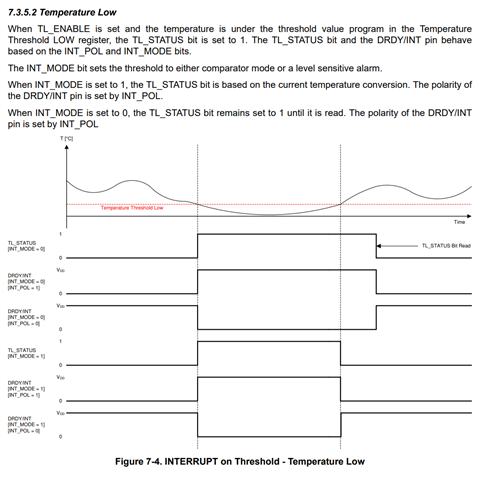The HDC2080 manual (pages 11 to 14) describe the behaviour of threshold crossing interrupts depending on the mode and polarity that is set.
On page 11, dealing with the Temperature High crossing threshold, in mode 1, comparator mode, with polarity set as 1, 2 interrupts are driven, 1 rising edge interrupt when the temperature exceeds the threshold and 1 falling edge interrupt when it drops back down again below the threshold. When the first interrupt occurs the value of TH_STATUS is 1. When the second interrupt occurs it presumably should be 0 but my interrupt service routine code as follows still has it as 1.
The sensor is set to automatically acquire temperature and humidity every 10 seconds
The Data Ready interrupt is disabled. All threshold interrupts are enabled. The DRDY/INT pin is set to interrupt on rising or falling edge.
Sensor is heated just past the temperature threshold then allowed to cool.
What am I doing wrong? Thanks.
Interrupt Service Routine














